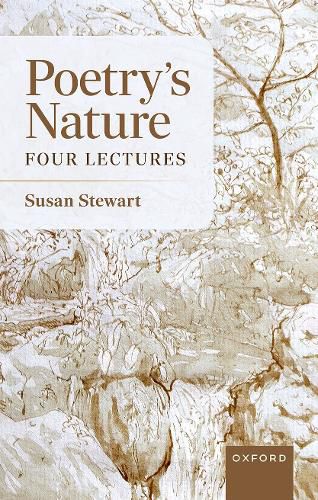Readings Newsletter
Become a Readings Member to make your shopping experience even easier.
Sign in or sign up for free!
You’re not far away from qualifying for FREE standard shipping within Australia
You’ve qualified for FREE standard shipping within Australia
The cart is loading…






How is poetry a living art? This is the question at the heart of Poetry's Nature. Although it is common to speak of "nature poetry," Stewart contends that the essential nature of poetry is bound up with the natural world: by looking to nature, we can better understand poetry and, in turn, our own situation within nature. The study draws on contemporary physics and philosophy to argue that all beings, and all matter, are enmeshed in relations to one another, and that such processural relations can help us to think about poetry as an ever-arriving, ever unfinished art. Based on Stewart's 2023 Clarendon Lectures in English at the University of Oxford, the volume's four chapters explore four paradigms that illuminate poetry's relation to other natural phenomena: the ways poems draw on birdsong to veer between language and sound, and hence between semantic density and meaninglessness; the experience of seasonality as a paradigm for the lyric's recursive use of time; the flows and forms of water as an inspiration for the enactment and depiction of motion and rest in poems; and, finally, the vast domain of the imperceptible as a resource for the imagination. Her examples range from medieval lyrics to Modernism. Poems are events that are felt in time rather than being merely cognized; rewarding of our attention, like the natural world; experienced, like the weather, in our bodies. By reframing poetry in its relation to nature, Poetry's Nature hopes to reframe our relation to the world in which we live, a task that is of ever greater urgency.
$9.00 standard shipping within Australia
FREE standard shipping within Australia for orders over $100.00
Express & International shipping calculated at checkout
How is poetry a living art? This is the question at the heart of Poetry's Nature. Although it is common to speak of "nature poetry," Stewart contends that the essential nature of poetry is bound up with the natural world: by looking to nature, we can better understand poetry and, in turn, our own situation within nature. The study draws on contemporary physics and philosophy to argue that all beings, and all matter, are enmeshed in relations to one another, and that such processural relations can help us to think about poetry as an ever-arriving, ever unfinished art. Based on Stewart's 2023 Clarendon Lectures in English at the University of Oxford, the volume's four chapters explore four paradigms that illuminate poetry's relation to other natural phenomena: the ways poems draw on birdsong to veer between language and sound, and hence between semantic density and meaninglessness; the experience of seasonality as a paradigm for the lyric's recursive use of time; the flows and forms of water as an inspiration for the enactment and depiction of motion and rest in poems; and, finally, the vast domain of the imperceptible as a resource for the imagination. Her examples range from medieval lyrics to Modernism. Poems are events that are felt in time rather than being merely cognized; rewarding of our attention, like the natural world; experienced, like the weather, in our bodies. By reframing poetry in its relation to nature, Poetry's Nature hopes to reframe our relation to the world in which we live, a task that is of ever greater urgency.